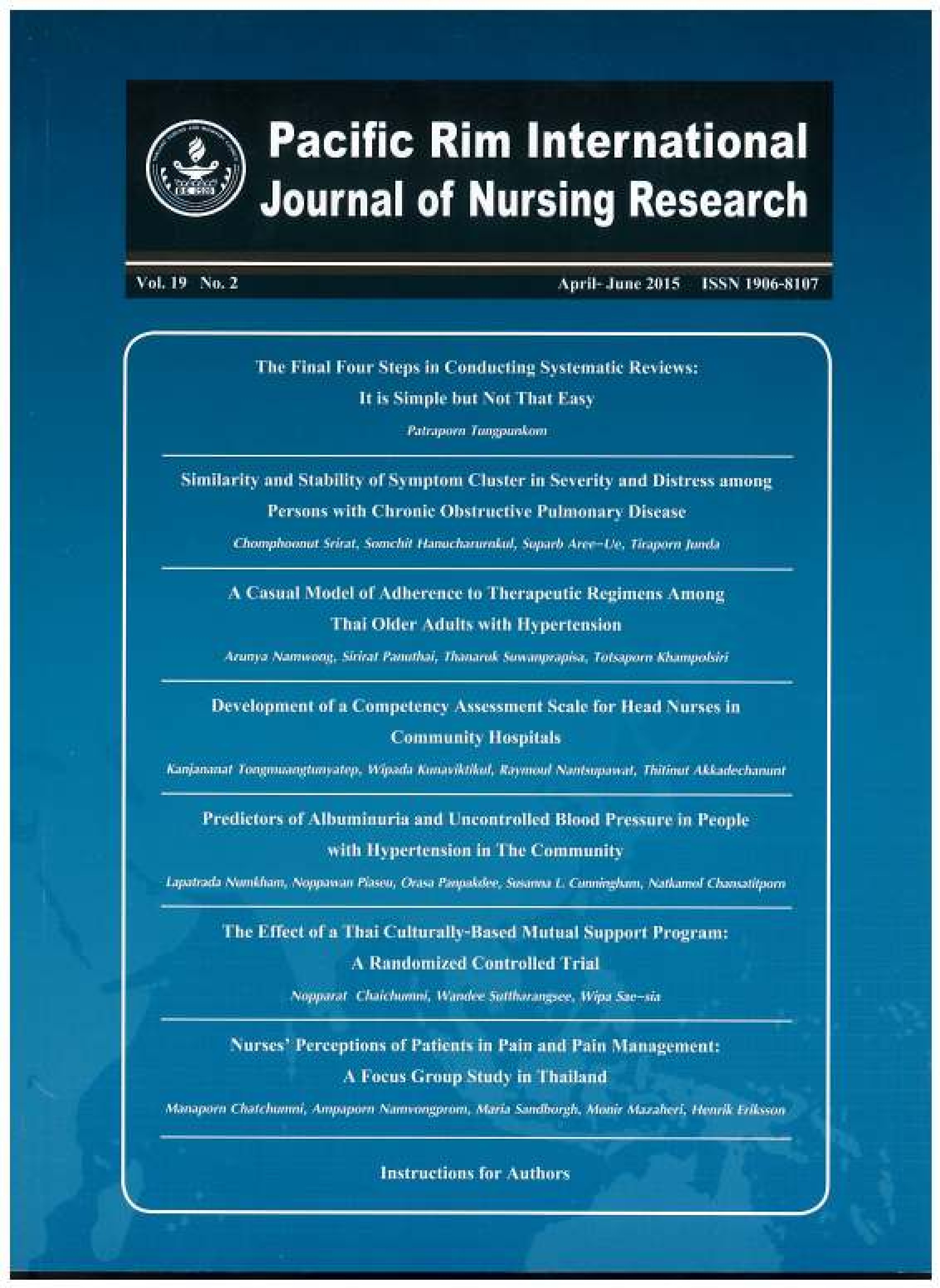A Casual Model of Adherence to Therapeutic Thai Older Adults with Hypertension
Keywords:
Adherence, Causal model, Hypertension, Thai older adults, Therapeutic regimensAbstract
A cross-sectional, predictive correlational design was used to test a causal relationship between predicting factors and adherence to therapeutic regimens among older adults with hypertension. Simple random sampling was used to obtain a sample of 341 attending five hypertension clinics in a community hospital in northern Thailand. Data collection used 9 questionnaires, including the personal information sheet, the Chula Mental Test, the Chula Activities of Daily Living Index, the Hypertension Knowledge-Level Scale, the Health Belief for Hypertensive Patient Scale, the Hypertensive Self-efficacy Scale, The Hypertensive Social Support Scale, the Provider-Patient Communication Scale, and the Hypertensive Adherence to Therapeutic Regimens Scale. Data were analyzed by Pearson’s product moment and structural equation model.
Results showed that the modified model fitted with the data and explained 60% of the variance in adherence to therapeutic regimens. Physical function, perceived self-efficacy to adherence, provider-patient communication had a direct effect on adherence to therapeutic regimens; social support from family had both direct and indirect effect through health belief (only perceived severity and barriers) and perceived self efficacy to adherence. Both had a had both direct and indirect effect on perceived self-efficacy to adherence through perceived susceptibility, but had only a direct effect on perceived benefits. Also social support from family had an indirect effect on perceived barriers through provider-patient communication then through knowledge of hypertension. Cognitive function had an indirect effect on adherence to therapeutic regimens through perceived self-efficacy to adherence and also indirect effect on perceived barriers through knowledge of hypertension.
Nurses should be aware of factors predicting adherence to therapeutic regimens and adopt these factors in potential nursing interventions, especially physical function, perceived self-efficacy to adherence, provider-patient communication, social support from family, perceived severity, and perceived barriers.
Downloads
Published
How to Cite
Issue
Section
License
Copyright: The Pacific Rim International Journal of Nursing Research, Thailand Nursing & Midwifery Council has exclusive rights to publish, reproduce and distribute the manuscript and all contents therein.








.png)



